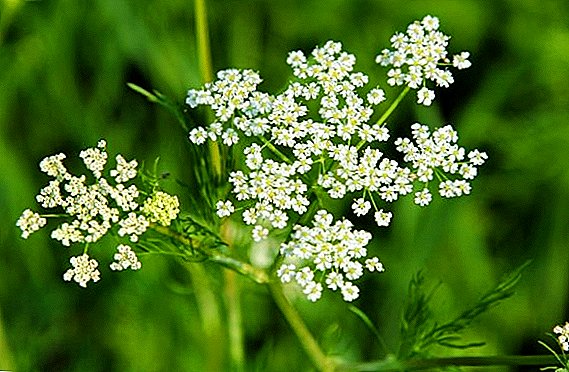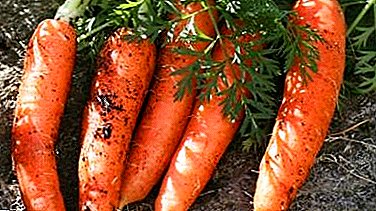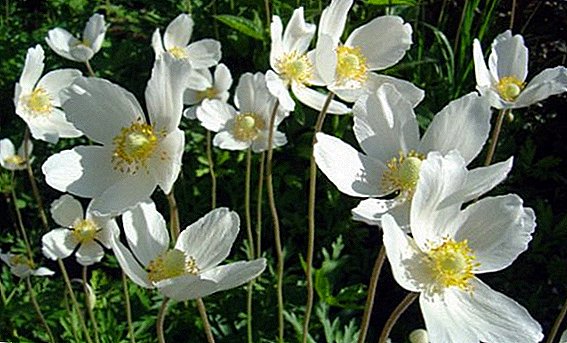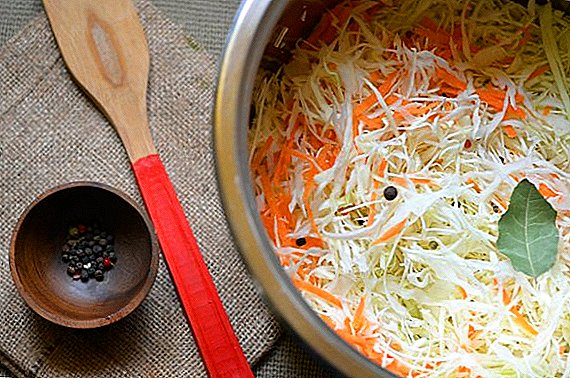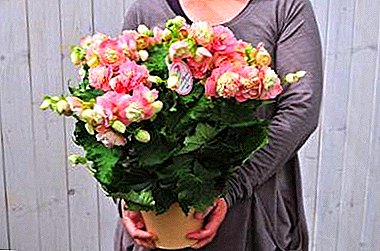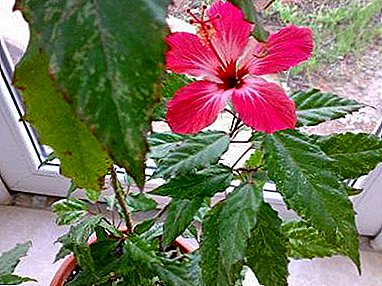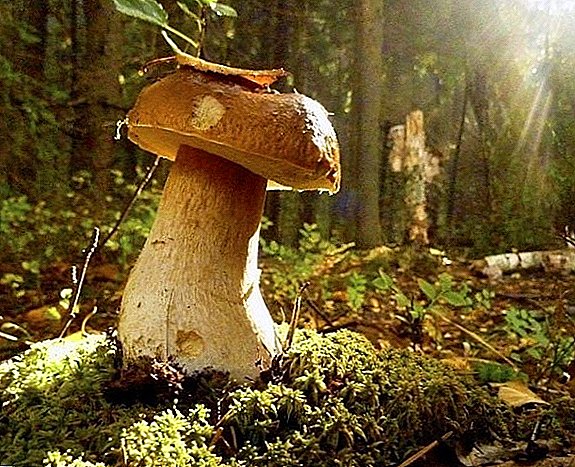 Many mushroom lovers prefer to collect them themselves, but only an experienced mushroom picker can tell the edible from the inedible and not go to the hospital with poisoning. After reading this article, you can find out what the most common representatives of safe mushrooms look like and how to distinguish them from poisonous mushrooms.
Many mushroom lovers prefer to collect them themselves, but only an experienced mushroom picker can tell the edible from the inedible and not go to the hospital with poisoning. After reading this article, you can find out what the most common representatives of safe mushrooms look like and how to distinguish them from poisonous mushrooms.
White mushroom
White mushroom (or as it is also called - boletus) is the king of all mushrooms and so is called because of its incredible flesh, which becomes a perfect white color when cooked.
Check out the most popular types of edible mushrooms.
By appearance it is quite simple to determine the boletus:
- the adult mushroom has a brownish or brown hat with sizes ranging from 10 to 30 cm. In some countries, the white mushroom can reach an incredible diameter of 50 cm provided that it rains often and the climate is very mild. The hat of a ripe young mushroom is usually pleasant, velvet to the touch, and on a rainy day a thin transparent mucus appears on its surface;
- a boletus's foot is dense, thick (about 5-7 cm in diameter), white or light brown in color, proportionally small relative to the top (10-12 cm in height);
- the pulp of the "king of mushrooms" is incredibly aromatic and tasty, very fleshy and dense.
 This mushroom grows on five continents of the existing seven (in Australia - too hot and dry, in Antarctica - too cold) in all forests. The growth time of the boletus directly depends on its habitat: in warm regions they appear in late spring - early summer, and cease to delight mushroom pickers in late autumn. In cold lands, it pleases the eye from June to October. The growth phase of this mushroom is so fast that within a week the boletus becomes fully mature, which is its distinguishing feature.
This mushroom grows on five continents of the existing seven (in Australia - too hot and dry, in Antarctica - too cold) in all forests. The growth time of the boletus directly depends on its habitat: in warm regions they appear in late spring - early summer, and cease to delight mushroom pickers in late autumn. In cold lands, it pleases the eye from June to October. The growth phase of this mushroom is so fast that within a week the boletus becomes fully mature, which is its distinguishing feature.
Find out what kinds of white mushrooms exist, how they are useful, how to prepare white mushrooms for the winter and how to distinguish a real white mushroom from a false one.
When collecting this type of mushrooms, you need to be careful: they are easy to confuse with the gall mushroom (false boletus), which, although very similar, has some differences:
- The most characteristic difference between the white fungus is the color of the slice: it is white in color and eventually darkens, in a false representative it is either yellow or white, but it quickly changes shade.
- Edible mushroom does not have a "grid" on the leg.
- The tubular area (the lower inner part of the cap) is pink in the false boletus, and white in the present.
- A false representative of eukaryotes tastes bitter, which is not characteristic of edible boletus.
 The peculiarity of the “royal” representative is that it can be consumed in any form, and there are a huge variety of dishes with this ingredient: you can make a salad (with greens or meat), marinate (with butter and onions), fry with meat or potatoes , add to casserole and much more.
The peculiarity of the “royal” representative is that it can be consumed in any form, and there are a huge variety of dishes with this ingredient: you can make a salad (with greens or meat), marinate (with butter and onions), fry with meat or potatoes , add to casserole and much more.Did you know? On average, the life cycle of a boletus lasts only a week, a maximum of 10 days. However, there are rare exceptions that "live" for 15 days and during this time they manage to grow more than twice.
Oyster mushroom
Common oyster mushroom (oyster mushroom, oyster mushroom, lump) is an incredibly valuable find, because this mushroom is very tasty, and it is easy to propagate it at your own summer cottage.  The appearance of the oyster mushroom is very characteristic, so it is quite difficult to confuse it with any other species:
The appearance of the oyster mushroom is very characteristic, so it is quite difficult to confuse it with any other species:
- the cap of the lump is very similar in shape to the ear of a person, has a matte finish and can be white or ashen. The diameter of the “apex” varies from 5 to 25 cm. Since the oyster mushroom grows in groups, the caps of the mushrooms in the complex form a multi-tiered fan. The aroma they have is very weak, but incredibly pleasant;
- the leg of the block is lateral, short (2-3 cm), almost imperceptible, of a light color;
- Oyster mushroom pulp is very dense, has a pleasant aroma and rich taste, makes the dishes more juicy.
Oyster mushrooms prefer to grow in many countries in mixed, deciduous and coniferous forests on rotten stumps and dead trees. The easiest way to find a fan of them near the birch, willow or aspen.
Important! In many countries, this mushroom is grown artificially for wholesale.Oyster mushrooms prefer to appear during the heat recession, namely from the end of September to the end of December, because this species does not tolerate high temperatures.
Common oyster mushroom is very easy to confuse with other members of the same family. For example, an orange oyster mushroom is very similar to an oyster oyster, but it will give out color, although the shape and general appearance are completely identical.  There is no poisonous analogue of oyster mushroom in Ukraine, so when collecting it is enough to pay attention to the shade. Only light or grayish representatives will be delicious.
There is no poisonous analogue of oyster mushroom in Ukraine, so when collecting it is enough to pay attention to the shade. Only light or grayish representatives will be delicious.
Oyster mushrooms can also be grown at home and frozen or dried for winter.
Heads are universal eukaryotes: they can be used in any form (pickled, fried, fermented), so when choosing food, any hostess will be at a loss, because of them you can make a lot of delicious and fragrant culinary masterpieces.
White Wolf
The white waving (or white, white soft) is a member of the Milky Way family, which has an incredible pleasant taste and an alluring flavor. It’s not so easy to meet a whitefish, so you need to know what it looks like so as not to miss:
It’s not so easy to meet a whitefish, so you need to know what it looks like so as not to miss:
- a hat of a light (white or cream) shade with a diameter of 5-8 cm. The reverse side of the top is usually darker, but of the same shade. Volnushka is the only mushroom that has a fluffy (hairy) cap covering, this is especially pronounced on the sides;
- leg disproportionately short (3-5 cm), usually white in color and also has a slight fluffiness;
- the flesh is usually not firm, rather juicy, white.
Fluffy eukaryotes grow in birch groves or mixed forests, a frequent tree of which is necessarily birch. The fungus usually appears from late August to late September.
Find out where volnushki grow and how not to get on their twin.
The white-haired tree is very similar to the white one and the pink wave.  White podruzdok These eukaryotes are edible and are very similar in taste to whitefish. It is easy to distinguish them from the load - the hat of the latter is smooth and has no peculiar "villi", and the pink wave has a pink tint.
White podruzdok These eukaryotes are edible and are very similar in taste to whitefish. It is easy to distinguish them from the load - the hat of the latter is smooth and has no peculiar "villi", and the pink wave has a pink tint.
In food, they can be used only as pickles and only with pre-soaking and boiling. When salted, the cap remains untouched with a fleecy and acquires a pleasant delicate taste.
Real bum
This grudge (or gruzd white, raw, wet or pravsky) - one of the most delicious mushrooms from the family russules:
- the head of a salmon is usually 5–20 cm in diameter, with a funnel in the middle of it. Skin mucous, milky or white, often with particles of earth or grass;
- Leg of foot is usually small (3-7 cm) in the shape of a cylinder, pleasant to the touch, white or yellowish. Inside the legs of this mushroom cavity;
- the flesh is very fragile, quite dense, having a white shade and a pleasant fruity aroma.

Important! The appearance of brown spots on the surface of mushrooms suggests that they are already quite old.You can meet a real forest in mixed or deciduous forests. The main condition for the growth of these fungi is the presence of birch, aspen or lime trees in its environment. Usually they grow in small groups, and the mushroom pickers behind them lead a real hunt. Those who want to feast on food need to go after them as soon as the sun rises. The most optimal time for these representatives is July, August and September.
It is rather difficult to mix a mushroom with any other mushroom due to the peculiarity of its cap, namely the funnel itself. In many countries of the world, mushroom is considered an inedible mushroom, in some CIS countries it is conditionally edible and is only suitable for salting. At the same time they need to be soaked for a long time, but for the sake of such excellent taste it is certainly worth it.
In many countries of the world, mushroom is considered an inedible mushroom, in some CIS countries it is conditionally edible and is only suitable for salting. At the same time they need to be soaked for a long time, but for the sake of such excellent taste it is certainly worth it.
We advise you to find out what types of wetlands exist, how useful these mushrooms are and how to properly prepare milk mushrooms for the winter.
Pine red
Pine Ginger (or Lactarius deliciosus) is a delicacy mushroom. It does not need, you can not even soak and eat directly raw:
- he has a large red cap of irregular round shape. The color can vary from light red to deep;
- the stem is low, but greatly widening towards the head. The form has a ribbed, tubular;
- Fish pulp is very dense, rich in flavor and tasty. Many gatherers eat it right in the forest.
 These delicacies grow near the pines, right in the pine needles. They appear in the middle of summer and do not cease to please until the very beginning of winter. Ryzhiki easy to confuse with ulechikov. It is not dangerous to health, but the crab does not have such taste and aroma. With the saffron milk you can cook anything, but the best is to eat just fresh pickled mushrooms.
These delicacies grow near the pines, right in the pine needles. They appear in the middle of summer and do not cease to please until the very beginning of winter. Ryzhiki easy to confuse with ulechikov. It is not dangerous to health, but the crab does not have such taste and aroma. With the saffron milk you can cook anything, but the best is to eat just fresh pickled mushrooms.Did you know? Scientists have shown that the kingdom of fungi has existed for more than 400 million years, which means that they are older than dinosaurs.

Row gray
Rowing gray (ryadovaya streaky, little mouse (mouse, mouse), podsosnovik, sapling, gray sandpiper, parsley) - edible fungus, which belongs to the family Ryadovkovyh:
- the fungus has a dark gray cap measuring 15 cm. Often, in the center of the top there are ray stripes of a dark shade. The older eukaryotes become, the less attractive the surface is;
- leg at the rows is proportionally long, white;
- the flesh is usually gray, has a floury taste and a pleasant delicate aroma.
 Gray Myshata grows in pine forests, mainly in the cold season, when there are no other mushrooms. Substock grows in moss alone or in small groups.
Gray Myshata grows in pine forests, mainly in the cold season, when there are no other mushrooms. Substock grows in moss alone or in small groups.A gray row can be confused with a representative of the same kind - a mouse row, which is very dangerous, because the last mushroom is poisonous. However, there are quite clear differences between them: the gray row has a more pronounced contour of the cap. Poisonous mouse ryadovka Mouse - an incredible find, because of it you can cook any dish, but must be pretreated (20-minute boiling).
Poisonous mouse ryadovka Mouse - an incredible find, because of it you can cook any dish, but must be pretreated (20-minute boiling).
Champignon ordinary
Champignon ordinary (or real champignon, meadow champignon, pecheritsa) - perhaps the most common mushroom, which you can easily buy in any supermarket:
- cavefish have a large round hat of white color with a dark ribbed bottom. Sizes are different (2-7 cm);
- cap proportional, smooth, fibrous, of the same color as the cap;
- the flesh is quite dense, having a pleasant light mushroom aroma and rich taste during heat treatment.

Important! The taste of the champignon has very little in common with the meadow. Meadow is much richer and more aromatic. However, even experienced mushroom pickers do not always collect mushrooms, because they are very easy to confuse with toadstool.There is a growing wild caves from the beginning of summer to the very end of autumn, but the store version can bear fruit all year round. Ordinary forest champignon loves fertilized soil, so the easiest way to find it is near animal pastures. They are not often found in the forest, the most common habitat for champignon are meadows and fields.
Familiarize yourself with the way champignons grow at home.
Pechertsy - insidious mushrooms, because they are very similar to a dangerous relative - a pale toadstool. The main difference from toadstool is that the toadstool grows only in the forest, and champignon is dry at the base, and the poisonous mushroom has a slimy layer. You can cook everything from champignons: appetizers, hot first and second courses. This mushroom produces an incredible broth. It is believed that the soup from the oven has the brightest and most intense taste.
You can cook everything from champignons: appetizers, hot first and second courses. This mushroom produces an incredible broth. It is believed that the soup from the oven has the brightest and most intense taste.
Champignon review

Goat
Goat (or lath) is a mushroom that prefers to grow in coniferous forests and is not a first-rate mushroom, but enjoys a certain popularity among mushroom hunters:
- the grille cap is rather large (from 5 to 12 cm) of a reddish or brown shade, rather voluminous. From the top of the top there is a dense tubular layer;
- the leg of the goat is proportional to the cap (5-12 cm), but may be somewhat shorter, which makes it less noticeable;
- the flesh is yellow or brown, tends to take on a pink hue when cut.
 A lath can only be confused with a pepper mushroom, but an experienced mushroom picker who knows what a goat looks like will surely notice that the pepper has a much smaller size and its taste is different from that of a grill (it has bitterness). The dishes that can be prepared from this product are the most diverse, however, before using the pulp, it must necessarily undergo heat treatment.
A lath can only be confused with a pepper mushroom, but an experienced mushroom picker who knows what a goat looks like will surely notice that the pepper has a much smaller size and its taste is different from that of a grill (it has bitterness). The dishes that can be prepared from this product are the most diverse, however, before using the pulp, it must necessarily undergo heat treatment.Important! Kozlyak not suitable for pickling or salting.
Autumn honeycomb
Autumn (or real) shade is the most sought-after view from this family. The peculiarity is that it grows on a tree.
- the cap of these mushrooms usually reaches a diameter of 10 cm (in rare cases - 15 cm), resembles a hemisphere of a light brown shade in shape, covered with small scales;
- leg of an rye is proportionally large (7-12 cm), white in color with a brownish base;
- the flesh of the present powder is usually dense, sourish to the taste.
 Mushrooms start to appear from the end of summer and disappear by the middle of autumn. They prefer to live on both living and dead trees (most often deciduous, especially love birch). Whole families grow up and are quite common throughout Ukraine. Cooking experience is possible in any way, they are suitable for everything, but before this the product must undergo heat treatment.
Mushrooms start to appear from the end of summer and disappear by the middle of autumn. They prefer to live on both living and dead trees (most often deciduous, especially love birch). Whole families grow up and are quite common throughout Ukraine. Cooking experience is possible in any way, they are suitable for everything, but before this the product must undergo heat treatment. 
Chanterelle
Chanterelle (real, yellow) is a very bright, unforgettable representative of the mushroom family.
- the cap of chanterelles has a bright yellow or reddish shade, the diameter of the top is 4-10 cm. In the middle there is a characteristic funnel, and the edges do not have a clear outline (a mushroom of irregular shape);
- the foot has the same color as the cap. The leg and the top are joined by a tubular pulp. Leg length - 4-7 cm, quite wide in volume;
- the flesh is quite dense, incredibly pleasant to the taste, has fruit notes in the smell.
Did you know? Chanterelles are one of the few eukaryotes that are not afraid of worms.
This chanterelle has some similarities with a false chanterelle, but a false chanterelle has an orange cap and a hollow pedicle, unlike a yellow chanterelle with a dense stem. Chanterelles are suitable for many dishes, you can cook them as you like. However, experienced cooks advise this product to be fried, because with such processing its taste is revealed to the maximum.
Find out where chanterelles grow and how not to fall for false mushrooms.

Chanterelle feedback

Boletus
Many mushrooms like birch, but boletus can be found exclusively under this tree:
- it has a small, rather voluminous cap (5-12 cm), of a brown color, often non-ideal round shape;
- leg long, flat, slightly narrowed closer to the apex;
- flesh loose, airy, pleasant to smell and taste.
 Boletus in the cut Brown cap is common in deciduous forests near the birch trees from mid-summer to mid-autumn. Podborozovik ordinary is very easy to confuse with the poisonous relative - the gall fungus. When you cut these mushrooms clearly shows that the edible mushroom does not change color, while the gall immediately acquires a reddish tint.
Boletus in the cut Brown cap is common in deciduous forests near the birch trees from mid-summer to mid-autumn. Podborozovik ordinary is very easy to confuse with the poisonous relative - the gall fungus. When you cut these mushrooms clearly shows that the edible mushroom does not change color, while the gall immediately acquires a reddish tint.This product can be prepared in any form, it is tasty both fried, and pickled or salted.  Gall mushroom in a cut
Gall mushroom in a cut
Aspen yellow yellow brown
Yellow-brown asparagus (or common-skinned scab) is an unusual representative of eukaryotes, which differs from other edible relatives by its scaly leg:
- the head of the pub is large, reaching 20 cm. It is not very voluminous, of a yellow-brown shade with smooth edges;
- scaly leg usually large, thick, proportionally high. Black scales favorably secrete white leg;
- the pulp of an aspen is fleshy, tasty, but does not have a pronounced smell.
Boletus prefers young deciduous and mixed forests and appears in June, and disappears in October. Usually, mushroom pickers harvest the largest crop in mid-September.  Aspen is only like mushrooms from its own family and differs only in color. This product is great for marinating. Salted or pickled aspen mushrooms are worse because they lose their shape.
Aspen is only like mushrooms from its own family and differs only in color. This product is great for marinating. Salted or pickled aspen mushrooms are worse because they lose their shape.
Semi white mushroom
Semi-white mushroom (boletus, sick of semi-white) - refers to the type of boletus
- the hat of the semi-white bolt is large, reaching 20 cm in diameter. Она достаточно объемная, глинистого или светло-серого оттенка;
- ножка непропорционально короткая (10 см), толстая, плотная, желтого цвета с коричневатым основанием;
- the pulp of the boletus is dense, yellow, and the color does not change when the incision is made. It has a specific pleasant mushroom aroma and taste.
This mushroom refers to those species that can be used in cooking to the maximum. It can be fried, boiled, baked, pickled, salted, and most importantly - it goes well with many products. 
Did you know? During growth, the possibility of its pressure on the arising obstacle can reach 7 atmospheres. A small mushroom can easily pierce even marble.
Polish mushroom
Polish mushroom (or a chestnut, brown flywheel, pansky mushroom) is a representative of the second category of mushrooms, which is very popular among gourmets:
- the flywheel cap is rather large and reaches a diameter of 20 cm. It has the shape of a hemisphere and has a rich brown matte color. After the rain a characteristic brilliance appears;
- leg proportional, 14 cm long. It has a light brown tint. If you press on it - there are bluish spots, which later become dark brown;
- the flesh has a dense texture, a very pleasant fruity aroma and sweetish taste. Usually white or yellow.
 Chestnut flywheel is easily confused with other members of this species. They differ in the color of the pulp. The correct brown flywheel has white or yellowish pulp without any impurities. It is possible to cook this mushroom as you like, it is tasty both during frying and during pickling.
Chestnut flywheel is easily confused with other members of this species. They differ in the color of the pulp. The correct brown flywheel has white or yellowish pulp without any impurities. It is possible to cook this mushroom as you like, it is tasty both during frying and during pickling.Spruce fir
Spruce Hedgehog (or elovik) - refers to russula mushrooms:
- The elovik hat is small, the maximum size is 8 cm. It has a convex shape, often with a small knob in the middle. The tips of the top down a little at the edges. The surface in dry weather is smooth and has a reddish color;
- the foot is proportional, from 2 to 6 cm in height, it looks quite dense, but it breaks easily. The color matches the color of the cap;
- orange pulp, with characteristic fruity notes in smell and taste.
Did you know? In many countries of the world, this species is considered inedible, but in Russia and Ukraine it is customary to pickle and marinate it.After consuming this product, the urine becomes reddish.
 Mushrooms are a very useful and valuable product, and a huge amount of them are growing in Ukraine. However, it is very important to find out what edible mushrooms look like and with what they can be confused, because they are very cunning. A number of poisonous representatives can easily kill a person.
Mushrooms are a very useful and valuable product, and a huge amount of them are growing in Ukraine. However, it is very important to find out what edible mushrooms look like and with what they can be confused, because they are very cunning. A number of poisonous representatives can easily kill a person.

